Sign up for our newsletter!
Your data will be handled in compliance with our privacy policy.
Your data will be handled in compliance with our privacy policy.
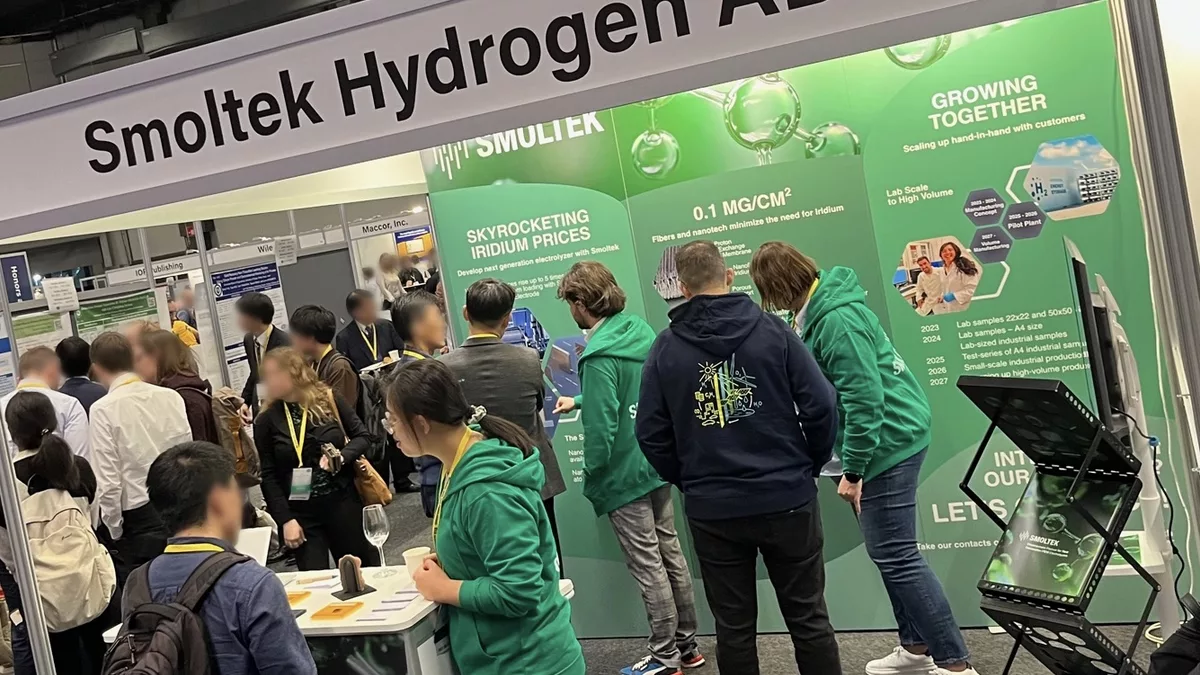
Smoltek Hydrogen attended the 244th ECS event in Gothenburg, October 8-12. This was a perfect venue to introduce our new material for electrolyzers to potential customers. The message was that now we are ready to engage in product development projects with electrolyzer companies.
The Electrochemical Society, the leading professional organisation in electrochemical and solid-state science and technology, rarely place their conference outside the Americas. And when they returned to Europe for the first time since 2009, they chose to meet in a city where sustainability of such events is a top priority: Gothenburg, Sweden – the most sustainable city in the world*.
The 244th ECS was also the perfect event for us, right on time when our next step is to expand the range of potential customers. And as a first-time contributor and exhibitor at the Electrochemical Society’s annual meeting we certainly made an impact, as our booth had a steady stream of curious visitors. We were busy explaining the benefits of the material, the technology behind it and our hand-in-hand approach to potential customers. The message was that we are now ready to engage in product development projects with electrolyzer companies.
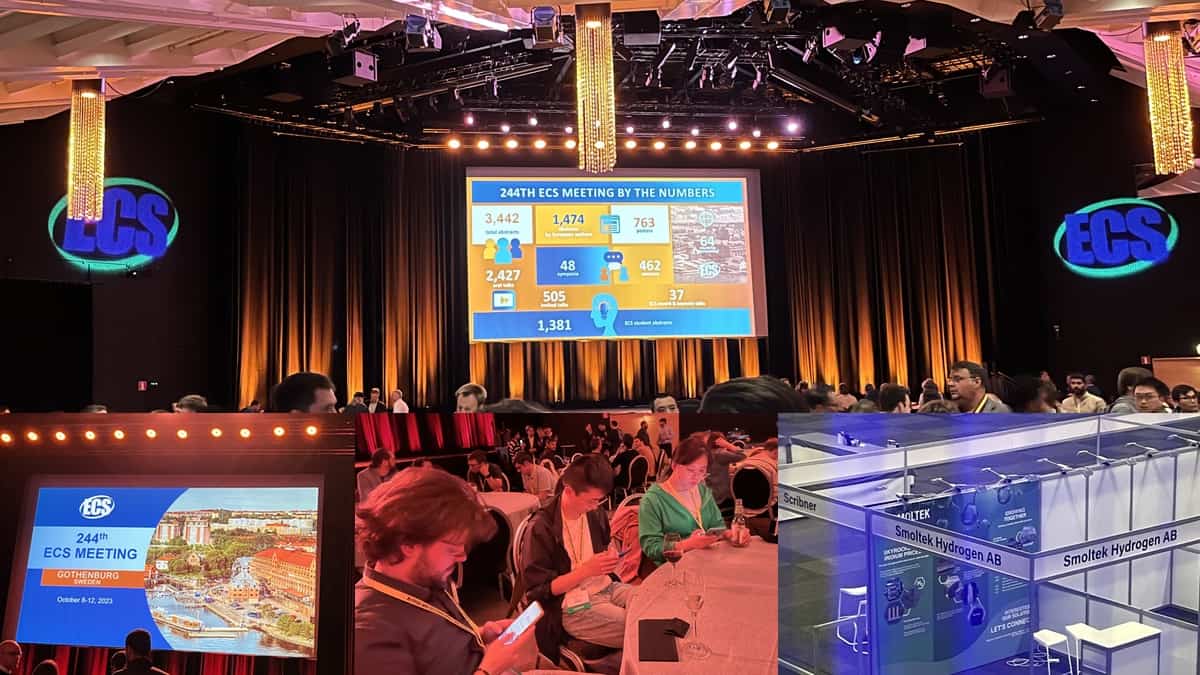
On site at Svenska Mässan in Gothenburg
The 244th ECS meeting was held at the Swedish Exhibition & Congress Centre, welcoming over 3,400 attendees from all over the world. We had since long planned to use this opportunity as the starting point of the market introduction of our electrolyzer cell material (ECM) for PEM electrolyzers, since already now customers need to start working with us to be able to apply our solution in the next generation electrolyzers they are planning for.
On Sunday October 8, Bastien Penninckx gave a conference presentation to an audience of experts working on reducing the need of iridium-based catalyst in PEM electrolyzers. He introduced the product, the company, what we have already accomplished, our next steps and how we plan to manufacture our ECM in high volumes. After many interesting questions from the audience during the Q&A, the discussions on our solution and roadmap continued in our exhibition booth, witnessing a steady flow of industry and research representatives in our booth and keeping us busy. Several of the industry’s key players expressed a serious commercial interest and joint next steps were discussed.
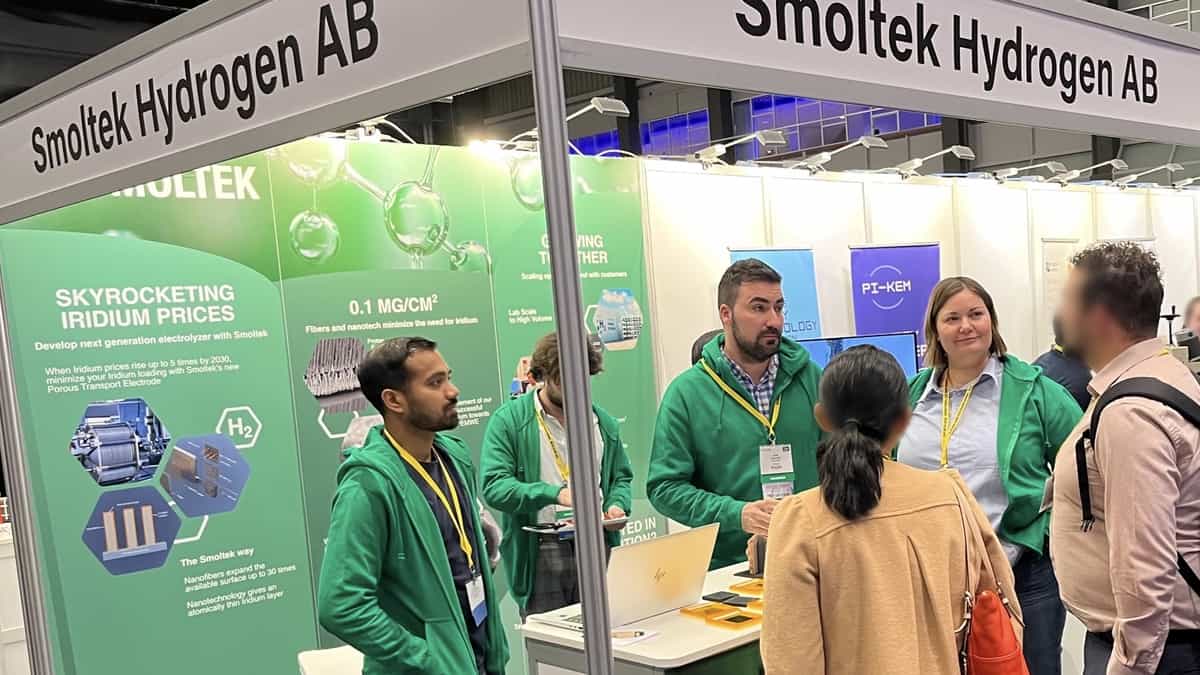
Green Hoodie alert!
In our booth we had prepared well. We had a huge backdrop, that was an eye catcher as well as it gave an overview of what we are doing. A tv-screen where we showed presentation slides and a short looping film from our in-house H2LAB. We also had small physical samples of our cell material and a summarizing leaflet to hand out.
But most importantly, we had our R&D and business people on site, and we were easy to spot – in our very green hoodies!
Our outfit was proven to be a hit as all the curious attendees just had to grab hold of someone in green and start asking about our new material. The questions were ranging from: “How do you make the nanostructures?” to “How big can you make the cell material sheet?”. And “How long/short can you make the nanofibers?”, “Can the technology be made for batteries?” … they were never-ending.
But mainly the attendees asked about our cell material solution for electrolyzers in general.
In the booth we could talk about how to work with us, and our roadmap for the cell material. The choice for the customers is free, do they want to work in their lab or in our lab? They decide. Also, we could offer them to be their development partner. And on site we had some samples to offer, and we invited some to visit our inhouse-lab.
Fabian Wenger, Head of R&D
244th ECS Summary
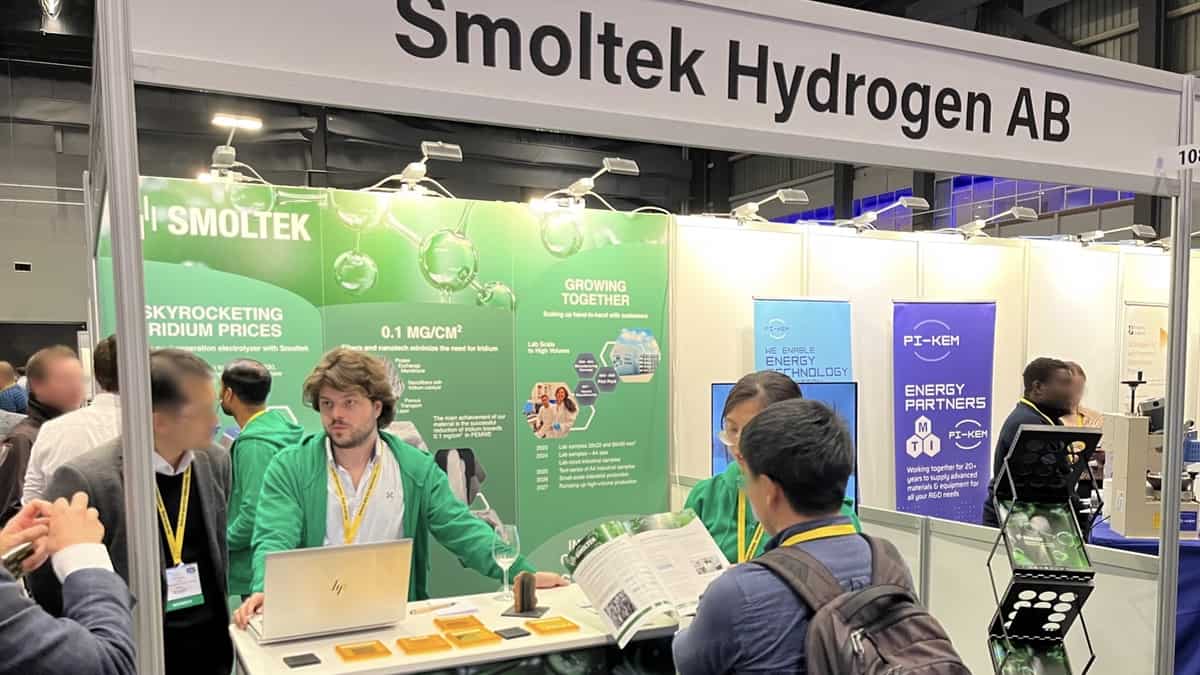
It was a fantastic coincidence that ECS 244 – the most important conference of the year – happened to take place in our hometown right when we needed to make the industry aware of how to take the first step towards drastically reducing the use of iridium. Among the 3,400 visitors, some were really the spot-on business and technology managers from the electrolyzer industry, and we made lots of new connections. It was a busy week also with meetings and lab tours at the office.
Ellinor Ehrnberg, President
Our solution for reducing iridium loading on the anode-side and at the same time keeping performance intact was well received as we spoke about the 600-hour electrolyzer test result we have made. The effective utilization of iridium through half-cell tests at low loadings were also well taken.
Sankar Sasidharan, Senior Scientist Electrochemistry
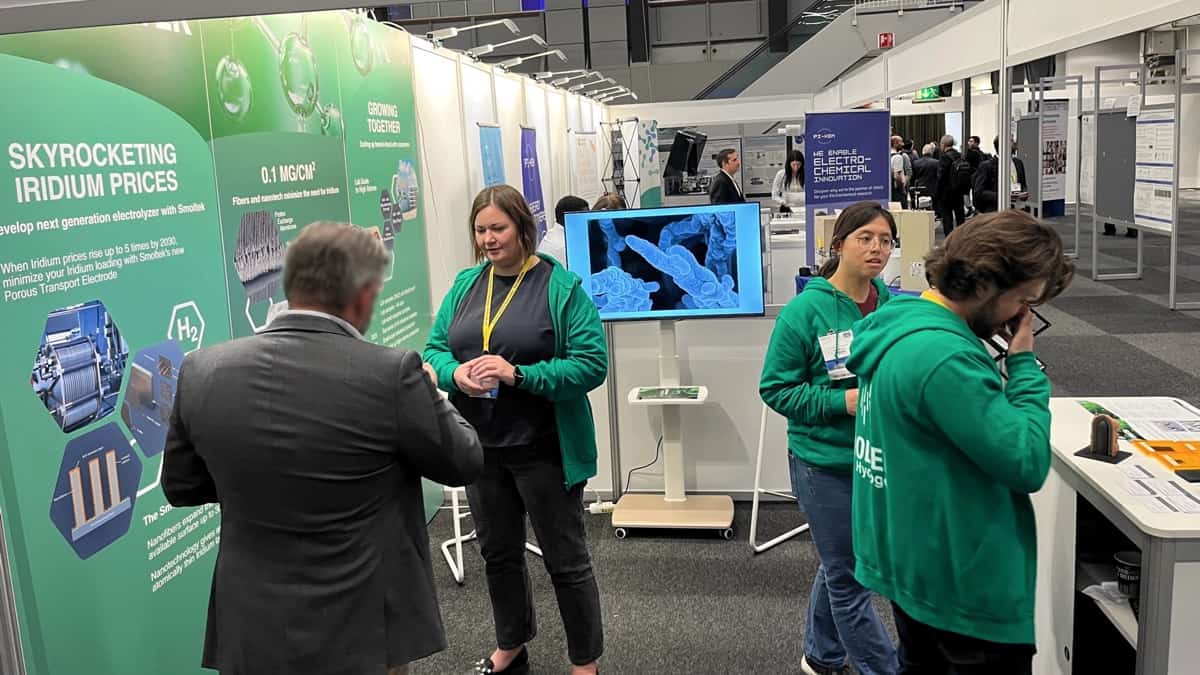
It was interesting to listen to big industry people speaking about hydrogen demand and applications, pricing of renewable energy requirements and scope of hydrogen generation in coming years.
Shafiq Kabir, Head of Volume Processes
The sessions on ALD also were helpful to understand the techniques used and possible improvements, since we also use it for platinum deposition. And also all the other presentations related to hydrogen electrolyzers , techniques and catalysts were almost full all the time underlined the importance of topic we are dealing with.
Xin Wen, Senior Scientist Nanotechnology
The meeting made it easy to have a number of face to face meetings with suppliers we are working with. It is important to get to know the people behind the screen, now when we have so many initiatives going on.
Reka Simon-Balint, Quality & Project Manager
So, by Thursday October 12 when the conference ended, a great number of the attendees at the 244th ECS had gotten knowledge of Smoltek Hydrogen and that we can make just as much hydrogen as using a commercial catalyst technology – but with way less iridium.
Your data will be handled in compliance with our privacy policy.
News

November 20, 2025
We have launched a podcast about materials technology and investments in general and our disruptive carbon nanotechnology in particular.
News
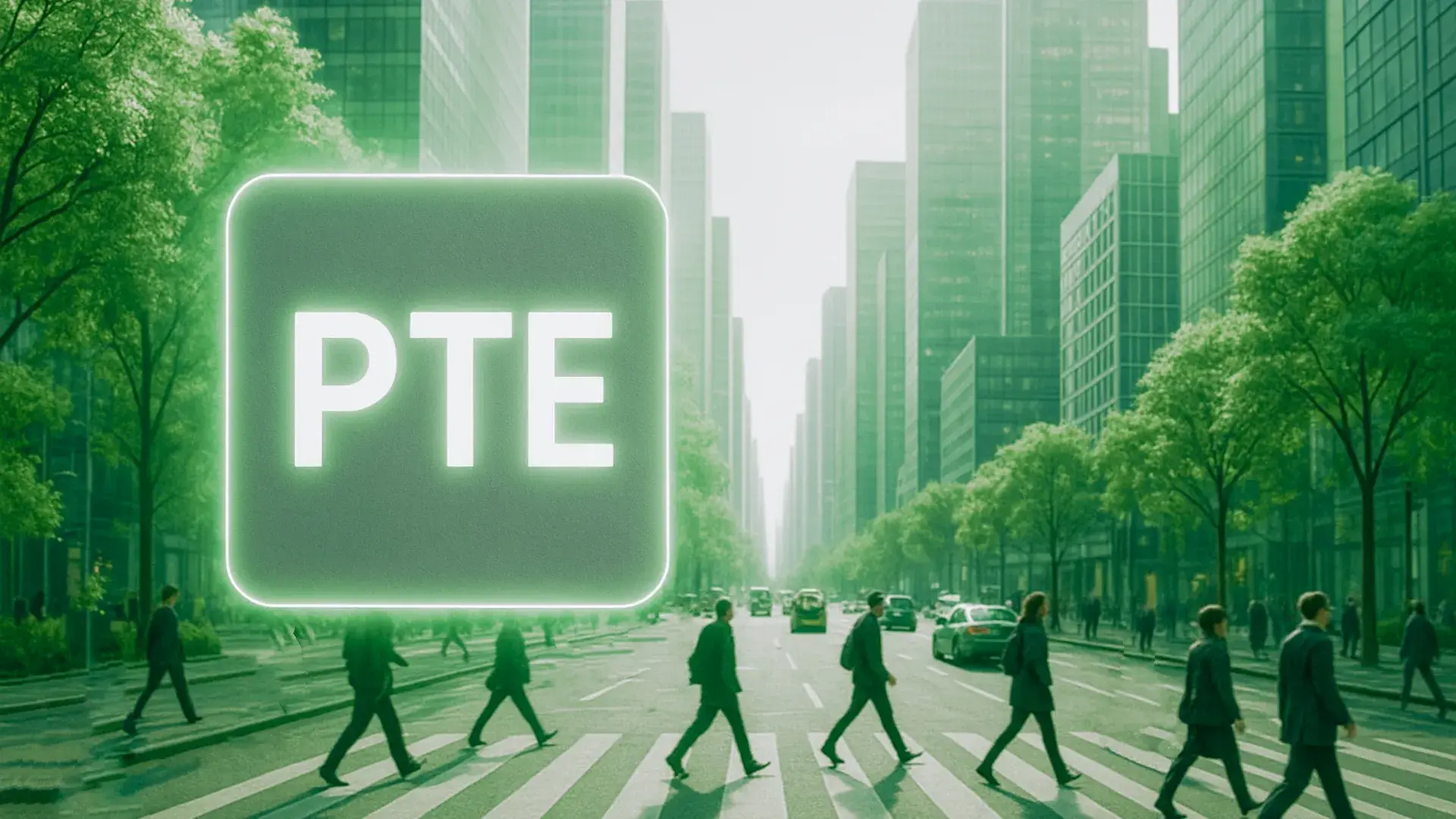
November 4, 2025
Smoltek Hydrogen has received an order for samples of low iridium-load Porous Transport Electrodes (PTE) for PEM electrolyzers. The electrodes will be used in a joint development project with Heraeus Precious Metals, a global leader in precious metals.
News
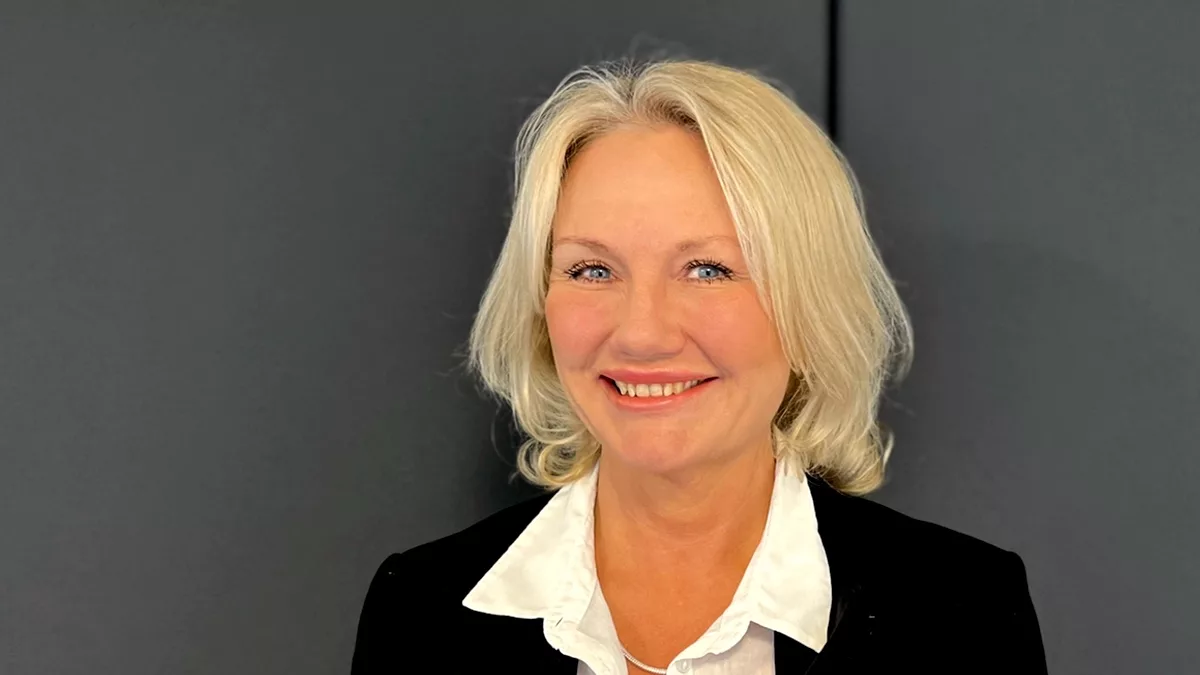
October 30, 2025
Smoltek Hydrogen recently participated in the Hydrogen Technology World Expo 2025 in Hamburg, Germany – the world’s largest industry event for innovation in hydrogen and electrolysis technology. Ellinor Ehrnberg, President of Smoltek Hydrogen, was invited to a panel discussion on the topic “Overcoming the Key Obstacles in Electrolyzer Expansion”
News
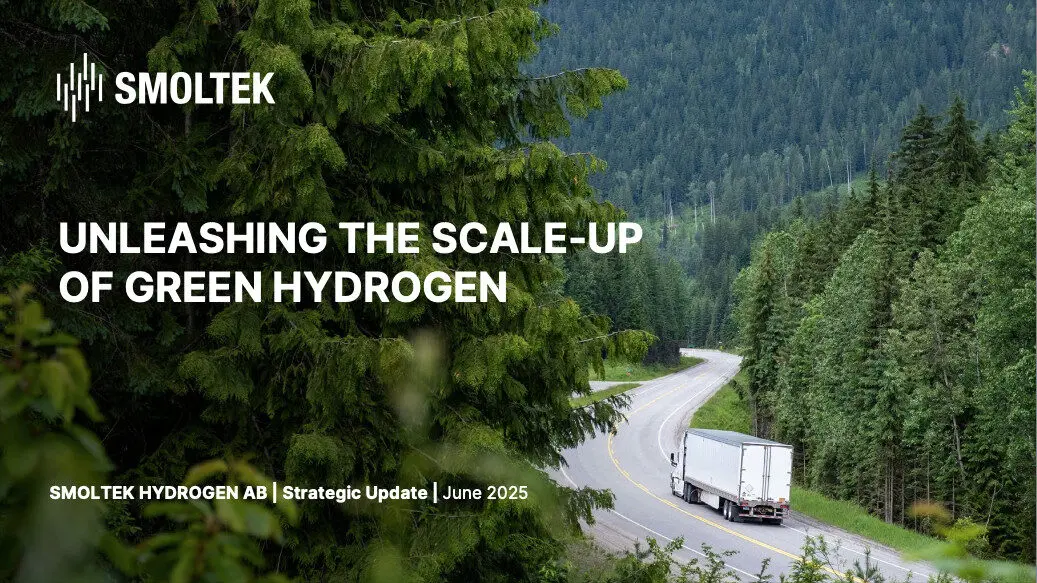
June 12, 2025
Smoltek Hydrogen is developing Smoltek PTE – a proprietary porous transport electrode based on carbon nanostructures, which is intended to meet the requirements of next-generation PEM electrolyzers for the production of fossil-free hydrogen.
News
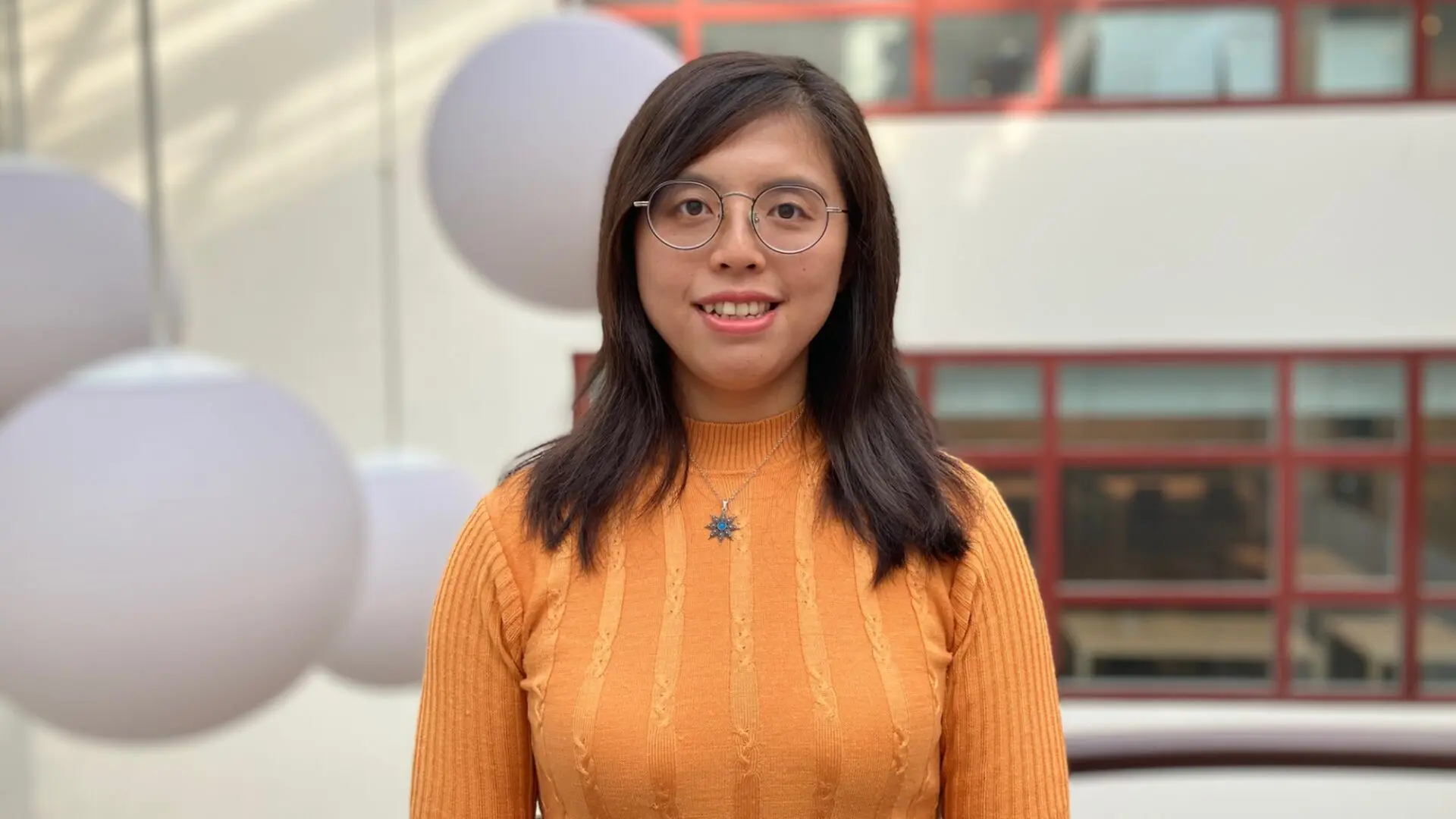
May 20, 2025
Smoltek has been awarded a new patent within the hydrogen business area. The patent discloses a method for depositing conformally coated catalyst support for the PTL (porous transport layer) that provides both high catalytic activity and additional corrosion protection.